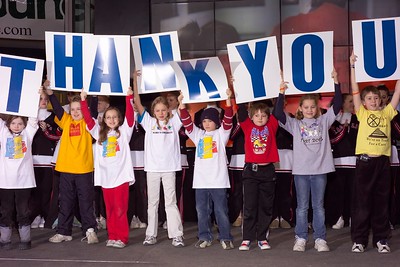Monthly giving is one of the few types of fundraising that did well last year. If your organization doesn’t have a monthly/recurring giving program or it’s fairly small, what’s keeping you from starting or growing your monthly giving program?
Whether you’re a big or a smaller organization or you had a good fundraising year or you didn’t, monthly giving makes so much sense (or cents).
In this post, I’ll tell you why monthly giving is important for your nonprofit, how to start or grow your program, and how to nurture it going forward.
Monthly giving helps you raise more money
Monthly or recurring donations can help donors spread out their gifts and it’s easier on their bank accounts. They might be apprehensive about giving a one-time gift of $50 or $100. But if you offer them the option of giving $5 or $10 a month, that may sound more reasonable.
It can also give you a consistent stream of revenue throughout the year instead of at certain times, such as when you do individual appeals and events and when grants come in.
Monthly gifts are smaller, but you can raise a lot of money with lots of small donations. Political candidates do it all the time. Also, monthly gifts aren’t as small as you think. The average is $25 a month.
It can also be a more feasible way to get larger gifts. A gift of $100 a month may be more appealing to a donor than giving a large sum all at once. Even if they start with a smaller donation, monthly donors are more likely to become major donors and legacy donors.
It raises your retention rate, too
The retention rate for monthly donors is around 90%. That’s significantly higher than other retention rates.
One reason is that monthly gifts are ongoing. But your donors have agreed to that, so this shows they’re committed to your organization.
These are long-term donors and long-term donors should always be one of your priorities.
How to get started
If you don’t already have a monthly giving program, make this the year you start one. Remember, it will help you raise more money and shouldn’t be too hard to set up.
A good way to start is to invite your current donors to become monthly donors. Your best bet for monthly donors are people who’ve given at least twice. These are donors who have shown a commitment to you.
That doesn’t mean you can’t ask first-time donors. This could be a good way to connect with donors from your most recent campaign. And if you haven’t officially welcomed your new year-end donors, do that now. Create a series of welcome messages and conclude it by inviting people to become monthly donors.
You could create testimonials from current monthly donors in order to entice future monthly donors.
Make monthly giving your go-to option
Put monthly giving front and center in all your campaigns. It should be an easy option on your donation page. Include it on your pledge form and make it a prominent part of your appeal letter.
I can speak from personal experience that once I started giving monthly, that’s the way I wanted to give to all organizations. Your donors would probably agree. Each year I’m happy to see that more organizations are going all in on monthly giving.
Organizations that don’t offer a monthly giving option are making a mistake. Some have a minimum donation, which I would also not recommend, if possible. If you do have a minimum, make it $5 a month instead of $10.
If your reason for having a minimum donation amount is to save money on your expenses, is that happening if your minimum deters someone from giving at all? You often have to invest a little to raise more money. And you should raise more money with a monthly giving program.
Make your monthly donors feel special
You need to do a good job of thanking your monthly donors. Go the extra mile and segment your monthly donors into new monthly donors, current monthly donors, and current donors who become monthly donors.
This way you can personalize their thank you letters to make them feel special. Be sure to mail a thank you letter, or even better, send a handwritten note. An email acknowledgment is not enough.
Many organizations send a monthly acknowledgment email or letter, and most are just okay. Some are basically only receipts, and as I’ve mentioned many times in the past, your thank yous need to be more than a receipt. Yes, it’s helpful to know the organization received your donation, but you’re not practicing good donor stewardship if that’s all you do.
You could spruce up these monthly acknowledgments, both by making them sound like they were written by a human and not a robot, and by providing some engaging updates.
You can include a list of your monthly donors in a newsletter, impact report, or on your website. Donor lists are just one of many ways to show appreciation and not the only one, so do much more than just that. Of course, honor any donor’s wish to remain anonymous.
One thing you should do is send your donors an annual summary of their monthly gifts. This is extremely helpful for people who itemize tax deductions. Make this letter more than just a receipt and use this opportunity to connect with your donors. Pour on the appreciation and let them know how their monthly donations are helping you make a difference. If you send one by mail, go one step further with a Thank You teaser on the outer envelope.
Reach out at least once a month
Your monthly donors made a commitment to you by giving every month. Make the same commitment to them by reaching out at least once a month.
You could create a special newsletter for monthly donors or include a cover letter referencing monthly donors. If that’s too much, you could give a shout out to your monthly donors and include information on how to become a monthly donor in your newsletter.
A thank you video is a great way to connect. Consider personalizing it, if you can. You could also provide other video content, such as a virtual tour, for your monthly donors.
Thank yous, newsletters, and updates are not a one-and-done scenario. Keep it up throughout the year. Many nonprofits start out communicating regularly with their monthly donors and then disappear after a couple of months. Always make a point to stay in touch with your donors.
Create a special section in your communications calendar specifically for monthly donors to help you with this.
Go all out for your monthly donors
I highly recommend a contact person for your monthly donors in case they need to update their credit card information or make a change to their gift, hopefully an upgrade. Include this information in their welcome letter or email. If you send a monthly acknowledgment email, be sure to include a link where your donor can make changes.
If you change your payment processor, make it easy for donors to transfer their information. For one organization I give to, all I had to do was click on a link they provided and presto…..
Another way to help out your monthly donors is to let them know when their credit cards are about to expire. Don’t rely on your donors to remember this, because most likely they won’t. You also don’t want to miss out on any revenue. Remember, small donations add up.
If your payment processor doesn’t automatically update credit cards, set up a system where you can flag cards that will expire in the next month or two. Then send these donors a friendly reminder email/letter or give them a call.
When my monthly giving credit card expired in the fall of 2022, only a couple of organizations contacted me before the expiration date. Of course, a few slipped through the cracks and I didn’t hear from these organizations until after the donations didn’t go through. There were also a few instances when I checked my credit card statement and realized the donations weren’t getting charged. Remember to take the lead on this and pay attention, or once again, you’ll miss out on receiving this important revenue.
You could encourage donors to give via an electronic funds transfer from their bank account instead. Then neither you nor your donors need to worry about expiring credit cards.
Once a monthly donor, always a monthly donor
Once someone becomes a monthly donor, you must always recognize them as such. You most certainly should send fundraising appeals to monthly donors, but not the same ones you send to other donors.
You can ask your monthly donors for an additional gift during one of your fundraising campaigns, but you MUST recognize they’re monthly donors. For example – We really appreciate your gift of $10 a month. Could you help us out a little more right now with an additional gift? People in our community are having a hard time paying their heating bills because of rising fuel costs.
You can also ask your monthly donors to upgrade their gifts after a year or so. Be as specific as possible – We’re so happy you’re part of our family of monthly donors and are grateful for your gift of $5.00 a month. Many families are having trouble making ends meet and we’re serving more people at the Westside Community Food Pantry right now. Could you help us out a little more with a gift of $7.00 or even $10.00 a month?
If you send the usual generic appeal, imagine your donor saying – “I already give you $10 a month and you don’t seem to know that.”
But if you let those committed monthly donors know you think they’re special, they’ll be more likely to upgrade or give an additional gift. Many monthly donors have stepped up and given additional donations over the last few years. That’s what you want. And, if they do give an additional donation, be sure to thank them for that. Here’s the opening from a great thank you card I received – “How generous of you to make a gift that goes above and beyond your monthly donations.“
Be sure to invest in this proven way to raise more money, boost donor retention rates, and provide an easier giving option for your donors.
Need more inspiration, get some ideas here.
Photo by Marco Verch










